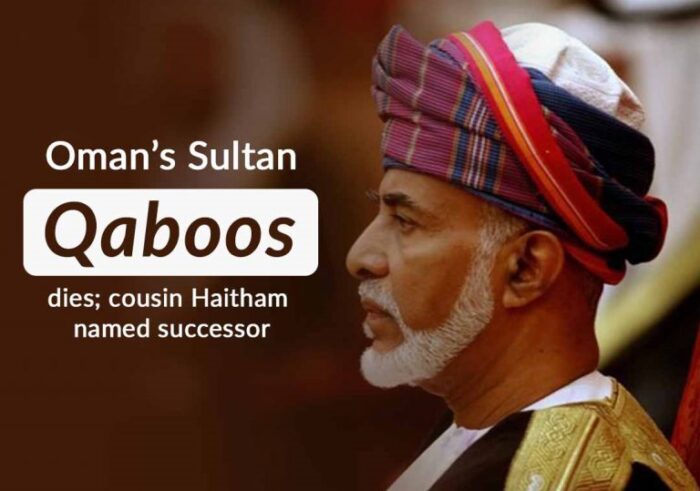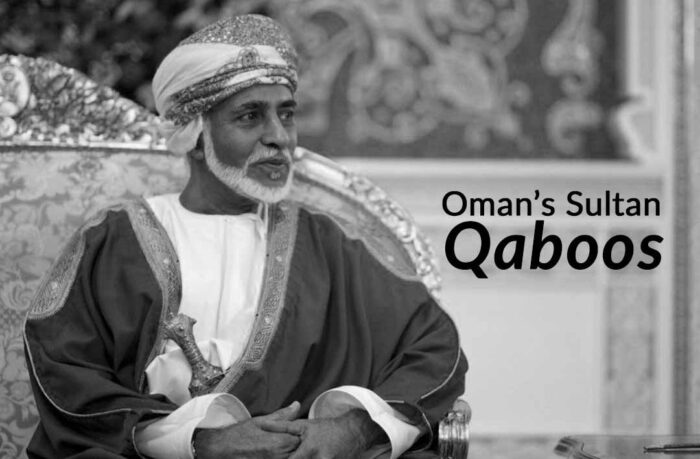Sultan Qaboos bin Said, one of the Middle East’s longest-serving rulers who upheld Oman’s neutrality in regional struggles, died on Friday at 79. The state media reported his cousin Haitham bin Tariq al-Said was called his successor.
Following his death, the state declared three days of official mourning with flags to be flown at half-mast for 40 days for the Western-supported Qaboos, who led the country since taking over in a bloodless coup in 1970 with the aid of former colonial power Britain.
National television of Oman broadcasted images of the funeral procession driving down a road lined with palm trees. The casket, covered in the Omani flag, was then taken to Sultan Qaboos Grand Mosque in the capital, Muscat, where prayers were being performed.
State news agency ONA didn’t announce a cause of death, but Sultan had been unwell for years and stayed a week in Belgium for treatment last month.
Qaboos hadn’t publicly declared his successor, as he had no children. According to a 1996 statute, the rest of the ruling family must choose a successor within three days of the throne becoming vacant.
Haitham bin Tariq’s nomination as the new Sultan
Haitham bin Tariq was named on Saturday after the country’s high military council called on the ruling members’ council to convene and elect a successor.
Before being selected as a successor, Bin Tariq had served as minister of national heritage and culture and was appointed by Qaboos in 2013 as chairperson of the main committee responsible for Oman’s development.
The Middle East is now eyeing the new Omani Sultan, who is taking power at a time when domestic challenges loom large, from high unemployment rates in the indebted oil territory to strained state finances and escalated tension between Iran, the U.S., and its ally Saudi Arabia.
A smooth succession of a new Omani Sultan was expected, Kristian Coates Ulrichsen of Baker Institute told Reuters.
“Analysts are discussing whether any of Oman’s neighbouring countries might try to pressure the new sultan as he settles into power – just as the Saudis and Emiratis did with Emir Tamim in the weeks and months after he expected power in Qatar in 2013.”
Diplomats’ response
Condolences began pouring in for the white-bearded Qaboos. George W. Bush, the former U.S. President, said in a statement that the Sultan had been a stable factor in the Middle East. Dubai ruler Sheikh Mohammed bin Rashid al-Maktoum tweeted him as the Sultan of honour, wisdom, and affection.
Located on the southeastern coast of the Arabian Peninsula, Oman has long been to the Middle East what impartial Switzerland is to global diplomacy, balancing ties with two vast neighbours locked in a regional tussle, Iran to the north and Saudi Arabia to the west.
The Sultanate of Oman maintained friendly relations with Tehran and Washington and mediated U.S.-Iran talks in 2013. Two years later, these talks led to the international nuclear pact, which the Trump administration quit in 2018.
Muscat, the capital of Oman, didn’t favour the Gulf dispute that saw Riyadh and its allies impose a boycott on Qatar in mid-2017. Also, it did not establish an alliance with a Saudi-led military coalition that occurred in Yemen against the Iran-aligned Houthi movement.
The diplomatic centrality of Oman remains an attribute of Sultan Qaboos’ personality, said Simon Henderson, director of the Bernstein Program on Gulf and Energy Policy at the Washington Institute.
Final words from experts
“With Sultan Qaboos gone, it is now hard to realise how Oman can involve itself in the Iran, Yemen, and Qatar issue until a new leader has settled himself – which means for the foreseeable future.”



